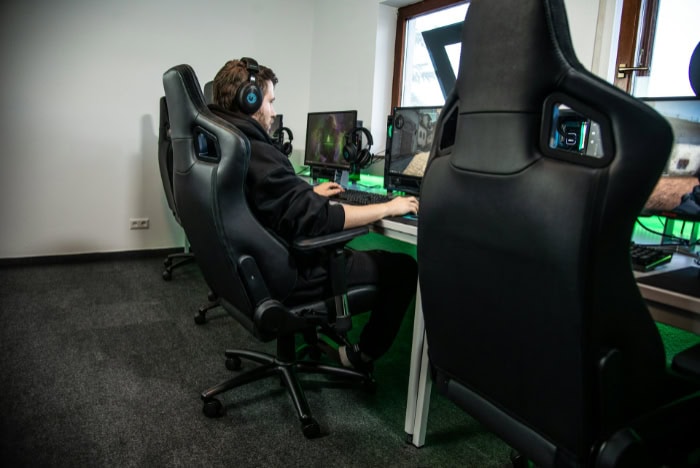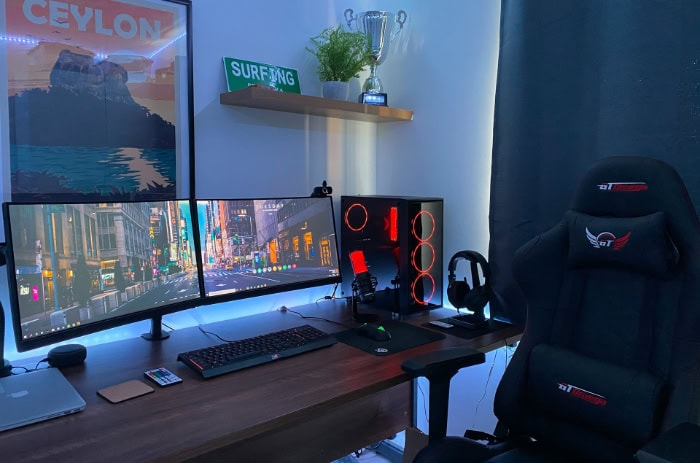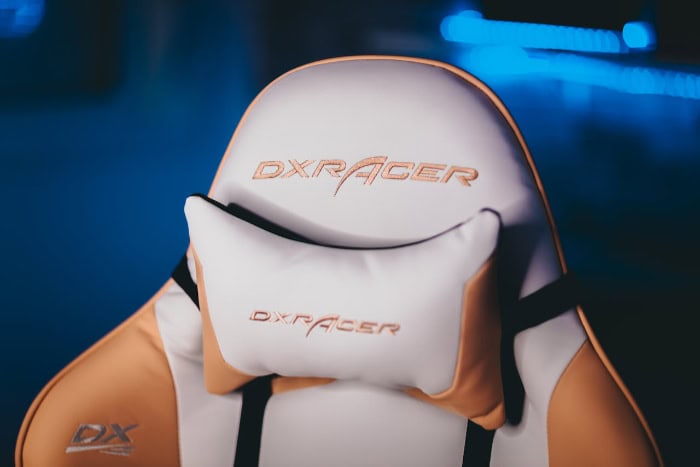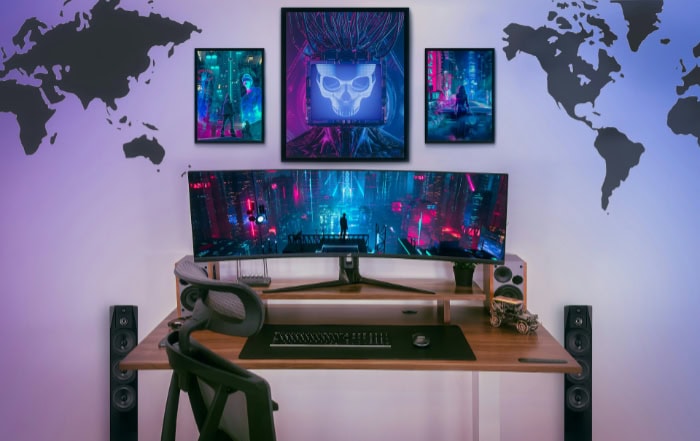Are Gaming Chairs Worth It? Comfort vs. Cost Explained

Hours spent gaming or working at a desk demand a chair that provides both comfort and support. Among the many options available, gaming chairs have captured attention with their bold designs and promises of improving posture and reducing fatigue.
From adjustable features to eye-catching aesthetics, these chairs are marketed as the ultimate solution for gamers and desk workers alike. Yet, with price points ranging from budget-friendly to premium, and reviews that vary widely, it’s natural to question their actual value.
Do gaming chairs genuinely deliver on their claims, or are they simply a stylish trend?
Comfort and Ergonomics
Gaming chairs are often marketed as the ultimate seating solution for those who spend long hours at their desks, promising a blend of comfort and ergonomics. Their design is crafted to cater specifically to gamers, but they have also found a place among remote workers and professionals seeking better seating options.
To assess their value, it’s important to examine the features that define their ergonomic appeal and how they perform during prolonged use, especially when compared to traditional office chairs.
Ergonomic Design Features
One of the standout characteristics of gaming chairs is their focus on features aimed at supporting the body during extended periods of sitting. Most models include built-in lumbar support, which helps maintain the natural curve of the lower spine.
This is often adjustable, allowing users to position it based on their specific needs. The inclusion of headrests is another common feature, designed to support the neck and reduce strain on the upper spine—a benefit especially noticeable during reclining.
Adjustable armrests are another critical component. Many gaming chairs offer multi-directional armrests that can be raised, lowered, or angled to match the user’s height and sitting posture.
This prevents shoulder tension and wrist strain, which are common complaints among those who use static chairs for long hours.
Perhaps one of the most appreciated features is the reclining backrest, which allows users to tilt the chair backward at various angles.
This can help reduce pressure on the lower back and provide a more relaxed position during breaks.
Suitability for Long Sessions
Gaming chairs are built with extended use in mind. High-density foam padding is often used in the seat and backrest to provide a balance between firmness and cushioning.
This is designed to prevent discomfort during long hours of sitting, as softer padding can lose its shape over time, while overly firm chairs may cause pressure points.
For gamers or professionals who spend hours seated, the ability to adjust and fine-tune the chair’s settings is a major advantage.
The reclining mechanism, paired with a lockable tilt option, enables users to switch between focused work and relaxed breaks without needing to leave their chair.
Some premium gaming chairs even include footrests, offering a convenient way to stretch out during downtime.
However, it’s worth noting that the effectiveness of gaming chairs for long sessions can vary depending on the individual. For example, people with larger frames or specific body shapes might find certain models less accommodating, even with adjustability.
Comparison with Office Chairs
While gaming chairs have garnered attention for their bold designs and gamer-centric features, office chairs have long been a reliable choice for ergonomic seating. Comparing the two reveals some important differences in comfort and support.
Gaming chairs often prioritize style, with bucket-style seats inspired by racing car designs. While this aesthetic is appealing to gamers, it may not always translate to optimal comfort.
The contoured sides of these chairs can sometimes feel restrictive, especially for users with broader hips. Office chairs, on the other hand, tend to favor a more traditional design with flatter seat bases and wider backrests, which may suit a broader range of body types.
In terms of ergonomic support, office chairs often excel at providing highly adjustable features. Many high-quality office chairs include advanced lumbar support mechanisms, breathable mesh materials, and a wider range of motion for recline and tilt.
While gaming chairs can match or even exceed these features in premium models, budget gaming chairs may fall short in comparison, often sacrificing true ergonomic design for style.
Health Benefits and Potential Drawbacks

Gaming chairs are often praised for their ability to provide ergonomic support and address common health concerns associated with prolonged sitting.
With features designed to improve posture and reduce aches and fatigue, they have become a popular choice for gamers and desk workers alike.
However, while they offer several benefits, there are also limitations to consider, particularly when it comes to how well they suit different users and budgets.
Posture Improvement
One of the most significant claims made by gaming chair manufacturers is that their products can help improve posture. Many gaming chairs are designed with a high backrest that supports the entire spine, from the lower back to the neck.
This design encourages users to sit upright rather than slouching, which is a common issue with chairs that lack adequate back support.
The inclusion of lumbar cushions is a major contributor to posture improvement. These cushions are positioned to support the natural curve of the lower spine, preventing excessive strain that might lead to discomfort or long-term posture problems.
Adjustable neck pillows also aid in maintaining proper spinal alignment by supporting the head and neck during extended periods of sitting.
That said, the effectiveness of these features depends heavily on how well the chair’s design aligns with the user’s body.
For example, if the lumbar cushion is not adjustable or placed incorrectly, it may fail to provide the intended support, forcing the user into an unnatural sitting position.
Back Pain and Fatigue Reduction
For those who experience back pain or fatigue from sitting for long hours, gaming chairs are often marketed as a solution. Their ergonomic features aim to alleviate pressure on the spine and surrounding muscles, helping to reduce discomfort.
The high-density foam padding commonly found in gaming chairs provides a firm yet cushioned surface that supports the body without causing additional strain.
Reclining backrests are another feature that can contribute to pain relief. By allowing users to tilt the chair backward, these chairs enable a more relaxed posture, reducing pressure on the lower back and promoting better blood circulation.
Adjustable armrests also play a role by supporting the arms and shoulders, which can help reduce tension in the upper back and neck.
However, it’s important to note that not all gaming chairs are equal in their ability to address back pain. Budget models, for instance, may lack the high-quality materials or precise adjustability found in premium options.
This can result in a chair that feels supportive at first but fails to provide lasting comfort during extended use.
Potential Limitations
Despite their benefits, gaming chairs are not without drawbacks. One of the most common criticisms is that their design may not suit all body types.
Bucket-style seats, for example, are a signature feature of gaming chairs, but their contoured sides can feel restrictive for users with broader hips or larger frames.
Similarly, taller users may find that the headrest is positioned too low, while shorter individuals might struggle to align the lumbar cushion properly with their lower back.
Another limitation is the lack of true ergonomic functionality in budget-friendly models. While these chairs often mimic the appearance of their premium counterparts, they may fall short in terms of adjustability and material quality.
For example, fixed armrests or poorly placed lumbar support can negate the ergonomic benefits that these chairs are meant to provide.
Additionally, some users find the firm padding used in gaming chairs to be uncomfortable, particularly if they are accustomed to softer seating options. This can result in pressure points that lead to discomfort over time, making the chair less suitable for long sessions.
Cost vs. Value

Gaming chairs come in a wide range of prices, from affordable entry-level options to high-end models with advanced features.
While their sleek designs and promises of ergonomic benefits are appealing, the question often arises: do these chairs justify their cost?
To answer this, it’s essential to evaluate their pricing, the features that contribute to their value, and how well they hold up over time.
Price Range Overview
The cost of gaming chairs can vary significantly depending on the brand, materials, and features. Budget models are typically priced between $100 and $200.
These chairs often mimic the appearance of premium gaming chairs but may lack advanced adjustability or use lower-quality materials such as thin padding or synthetic leather that wears out quickly.
Mid-range options, priced between $200 and $500, offer a balance of affordability and quality. Chairs in this category often include features like adjustable lumbar and neck support, multi-directional armrests, and reclining mechanisms.
The materials used, such as thicker foam and higher-grade upholstery, are generally more durable and comfortable than those found in budget models.
Premium gaming chairs, which can range from $500 to over $1,000, are designed with both performance and luxury in mind. These models often feature top-notch build quality, such as memory foam cushions, durable steel frames, and high-quality leather or breathable fabric.
They also tend to offer an extensive range of adjustments, allowing users to customize the chair to their specific needs.
Features Justifying Cost
The price of a gaming chair is often tied to the range and quality of features it offers. One of the most important considerations is adjustability.
Higher-priced chairs typically provide more options to adjust the lumbar support, armrests, seat height, and backrest angle.
These adjustments are crucial for achieving a comfortable and ergonomic sitting position, making them worth the investment for those who spend long hours seated.
Material quality is another factor that influences cost. Premium chairs often use dense, high-quality foam that maintains its shape over time, unlike cheaper padding that may compress and lose support.
Upholstery choices, such as genuine leather or breathable fabrics, contribute to both comfort and durability. These materials not only enhance the chair’s appearance but also ensure it lasts longer under daily use.
Aesthetics also play a role in determining price, though this is more subjective. Gaming chairs are known for their bold, racing-inspired designs, which appeal to many gamers.
Higher-end models often include finer craftsmanship and customizable options, such as color schemes or branded elements, that add to their visual appeal.
Long-Term Investment
When considering the cost of a gaming chair, it’s important to think about its durability and overall value over time. A well-made gaming chair, especially from a reputable brand, can last for several years with proper care.
This durability can make a higher upfront cost worthwhile, particularly when compared to cheaper chairs that may need to be replaced more frequently due to wear and tear.
Additionally, the ergonomic benefits provided by a high-quality gaming chair can contribute to better comfort and reduced physical strain over time.
For those who spend hours at a desk daily, this can translate into improved productivity and fewer health-related issues, making the chair a worthwhile investment in the long run.
However, it’s worth noting that not all gaming chairs offer the same level of durability or comfort, even at higher price points.
Some premium models may prioritize aesthetics over functionality, so it’s important to assess whether the features align with your specific needs before committing to a purchase.
Design and Aesthetic Appeal

Gaming chairs are often recognized for their striking designs, which set them apart from traditional office seating. These chairs are crafted to appeal to gamers, blending bold aesthetics with functional design elements.
While their unique appearance plays a major role in their popularity, it also raises questions about practicality and how well these design choices meet the needs of users.
Beyond their default look, many gaming chairs also offer customization options, allowing users to make their chair truly their own.
Gaming-Inspired Style
One of the most distinctive aspects of gaming chairs is their racing-style design, inspired by the seats of high-performance sports cars. This design typically includes a high backrest, contoured sides, and bright, contrasting colors.
For gamers, these visual elements often create a sense of immersion, complementing the gaming environment and adding a sense of excitement to their setup.
The bold look of gaming chairs often incorporates sharp lines, vibrant color schemes, and unique patterns. Some chairs also feature branded designs, such as logos from popular gaming franchises or esports teams.
This makes them especially appealing to enthusiasts who want their chair to reflect their interest in gaming culture.
While this dramatic style is a major selling point for many, it might not suit everyone. For professionals working in shared or formal spaces, the flashy aesthetic of a gaming chair might feel out of place.
This has led to the rise of more subdued designs in some models, which aim to balance the gaming-inspired look with a more sophisticated appearance.
Practicality of Design Choices
Beyond their eye-catching appearance, gaming chairs incorporate design elements that are intended to enhance usability. For example, the bucket-seat design, which mimics the snug fit of a racing car seat, is meant to provide additional support by cradling the user.
However, this feature can be a double-edged sword. While the contoured design may feel comfortable for some, it can be restrictive for individuals with broader hips or larger frames.
Similarly, the high backrest found on most gaming chairs is a practical feature that supports the neck and upper back. This is particularly beneficial for users who spend hours at their desks, as it helps reduce strain.
However, the exaggerated styling of some chairs, such as oversized wings or overly rigid contours, might feel unnecessary and could limit mobility.
The choice of materials also plays a role in the practicality of these chairs. Many gaming chairs use synthetic leather, which contributes to their sleek appearance but may not be as breathable as fabric options.
This could lead to discomfort during extended periods of sitting, especially in warmer environments.
Customization Options
Another appealing aspect of gaming chairs is the ability to customize their appearance and functionality. Many manufacturers offer a wide range of color schemes, allowing users to choose chairs that match their gaming setup or personal preferences.
Some brands even allow for fully personalized designs, such as adding custom logos, names, or patterns to the upholstery.
Beyond aesthetics, customization extends to the chair’s adjustability. Features such as adjustable armrests, removable cushions, and reclining mechanisms allow users to tailor the chair to their specific needs.
This level of personalization enhances the overall user experience, making the chair feel more like a piece of equipment designed specifically for the individual.
For those looking to add a personal touch, accessories such as lumbar pillows with unique designs or matching footrests are also available. These options give users the ability to further enhance both comfort and style, making the chair a functional centerpiece of their gaming or workspace setup.
Alternatives to Gaming Chairs

While gaming chairs are a popular choice for those seeking comfortable and stylish seating, they are not the only option available. Depending on individual needs, preferences, and budgets, there are several alternatives that can provide similar (or even superior) comfort and functionality.
Ergonomic Office Chairs
Ergonomic office chairs are often regarded as the gold standard for long hours of sitting, whether for work or gaming. Designed with functionality and comfort as priorities, these chairs focus on providing proper support for the body, particularly the back, neck, and arms.
Unlike gaming chairs, which often feature racing-inspired designs, office chairs tend to have a more understated appearance, making them suitable for both professional and home environments.
One of the main advantages of ergonomic office chairs is their adjustability. High-quality models often include features such as adjustable lumbar support, seat depth, and synchronized tilt mechanisms that ensure the chair adapts to the user’s posture and movements.
This level of customization allows office chairs to accommodate a wider variety of body types and sitting preferences compared to some gaming chairs, which may focus more on aesthetics than true ergonomic design.
In terms of cost, ergonomic office chairs can range from affordable to high-end, much like gaming chairs.
However, office chairs in the mid to high price range often provide a better balance of comfort, durability, and ergonomic features, making them a strong contender for those who prioritize functionality over style.
Budget-Friendly Options
For those who don’t want to invest in a gaming chair or an expensive office chair, there are budget-friendly alternatives that still offer decent comfort and support.
Basic office chairs, for instance, can provide an adequate seating experience without the flashy designs or advanced features of gaming chairs.
While they may lack the premium materials and extensive adjustability of higher-end options, many budget office chairs include essentials such as adjustable height and a padded seat.
For an even more economical option, seat cushions and backrests can be added to existing chairs to improve comfort and posture. Memory foam cushions, for example, can provide additional support for the lower back or hips, making an ordinary chair feel much more comfortable during extended use.
This approach is particularly useful for those who already own a chair that is functional but lacks proper ergonomic support.
Another cost-saving alternative is to look for lightly used or refurbished chairs. Many high-quality office chairs and gaming chairs are available second-hand at a fraction of their retail price, offering an affordable way to access premium seating options.
Hybrid Solutions
Hybrid chairs combine elements of gaming aesthetics with the advanced ergonomics typically found in office chairs. These designs aim to offer the best of both worlds, appealing to users who want the bold styling of a gaming chair without sacrificing comfort and functionality.
Hybrid models often feature the sleek lines and vibrant colors associated with gaming chairs but include more practical design elements, such as fully adjustable lumbar support, mesh backrests for increased breathability, and wider seat bases.
This makes them more versatile and suitable for users who split their time between gaming and professional tasks.
Another benefit of hybrid solutions is that they address some of the limitations found in traditional gaming chairs.
For instance, while many gaming chairs rely on synthetic leather for their upholstery, hybrid designs may incorporate breathable fabrics or mesh, which are better suited for long hours of sitting in warmer conditions.
These chairs tend to sit in the mid to high price range, making them an investment, but one that can be worthwhile for those who value both style and substance.
By blending ergonomic functionality with gaming-inspired aesthetics, hybrid models cater to users who want a chair that performs well across a variety of activities while still looking visually appealing.
Conclusion
Gaming chairs have carved out a unique niche, offering a blend of bold aesthetics and ergonomic features aimed at enhancing long hours of sitting. They excel in providing adjustable lumbar support, reclining functions, and a striking design tailored to gaming enthusiasts.
However, their value greatly depends on individual needs, body types, and budgets.
For those seeking alternatives, ergonomic office chairs provide exceptional support and adjustability, often outperforming gaming chairs in practicality.
Budget-friendly solutions and hybrid designs also present viable choices, catering to diverse preferences while balancing cost and functionality.
Selecting the right chair ultimately comes down to prioritizing comfort, health benefits, and personal style. With a wide range of options available, there’s no shortage of ways to create a setup that fits your lifestyle while ensuring long-term comfort and support.


